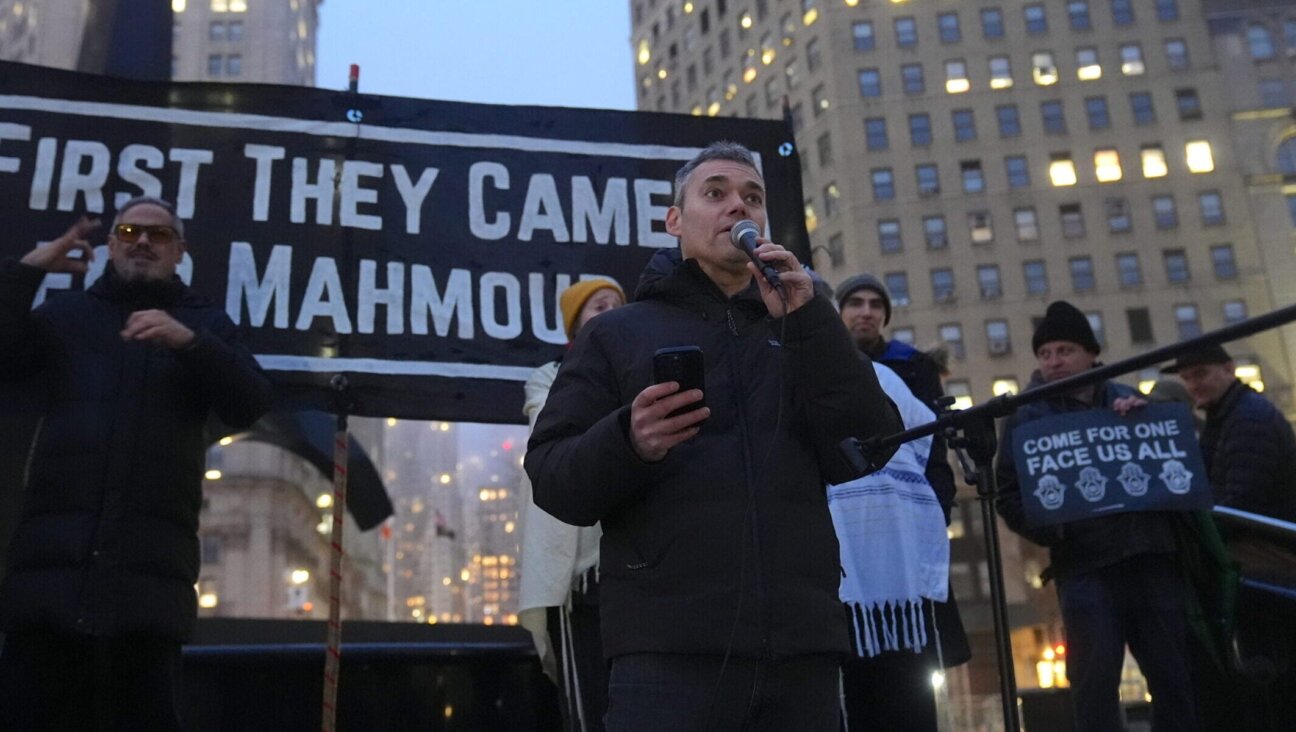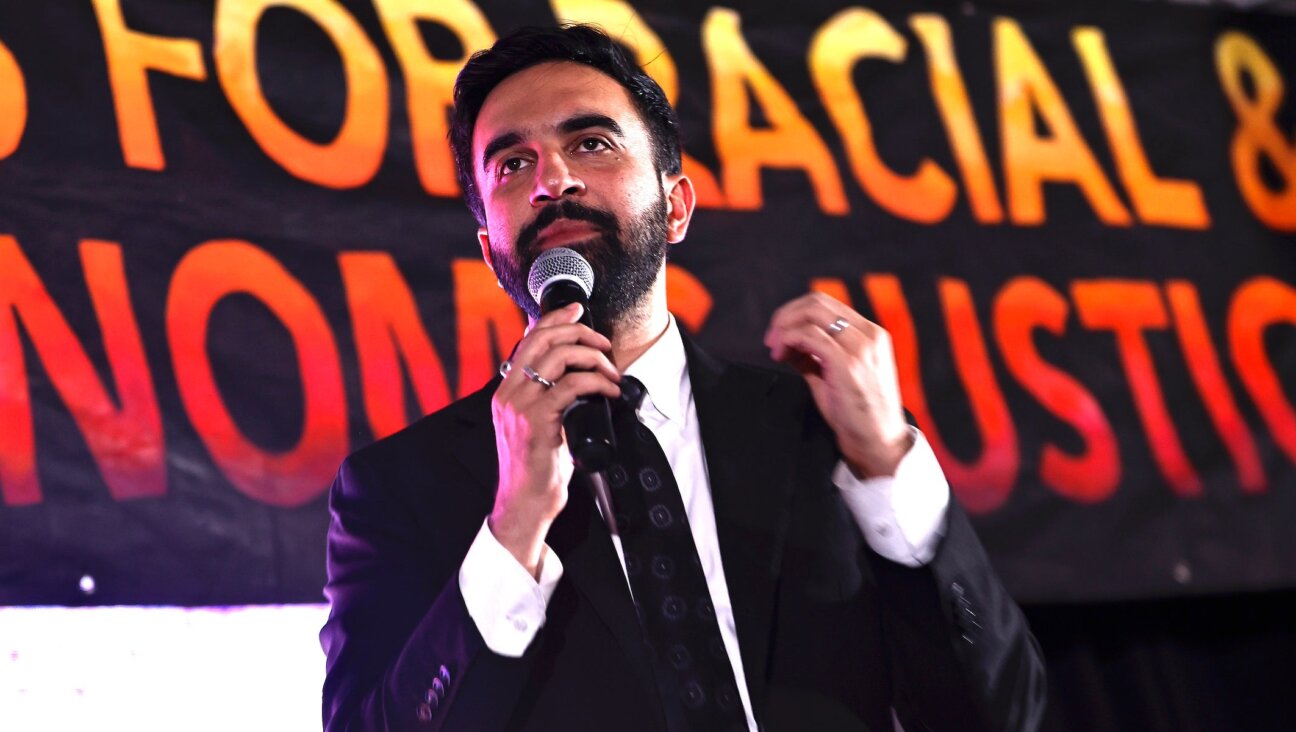Finding the Scapegoat
’Tis the season when Jews engage in penitence, fasting and charity in order to strengthen their respective cases as they plead before the heavenly judge. Attempting to help us in this regard, charities of all flavors jam our mailboxes with urgent, heart-rending snail mail, while synagogues issue friendly reminders to reserve our High Holy Day seats.
This might seem an especially inauspicious moment to send out such requests for contributions. The cataclysmic collapse and purge of Fannie, Freddie, Lehman, Lynch and AIG has certainly inflicted considerable financial damage on many of those normally generous.
It’s counterintuitive, but the timing of these mailings actually couldn’t be better. Quite a few of the financially shell-shocked will find themselves, despite their sudden hardship, dutifully mailing out checks to the needy, the handicapped and the houses of worship.
As the thinking goes, who knows? Recent losses might prove to be only the harbinger of something much bigger in the cosmic scheme of things, and a bit of charity might perhaps go a long way toward preventing a fate worse than mere monetary loss. After all, the most poignant prayer of the High Holy Days solemnly advises that divine rejection of our penitence brings a horrible sentence: death by drowning, fire or asphyxiation, if not by wind, hunger or sword.
For more than 25 centuries, we Jews have stood atremble before the highest of benches during the first days of the seventh lunar month, which we call Tishrei. The peculiar rites we perform during the Ten Days of Penitence are designed to ensure us another year of life.
That, at least, is the belief of the 15% of Jews who think that God simply dictated the Torah and all Jewish laws — even those laws promulgated by the rabbis in the Middle Ages — to Moses at Mount Sinai.
The remaining 85% of us, however, might be comforted to know that Jews haven’t been the only nation performing such elaborate rituals of sin-purging around this time of year. We might have our Rosh Hashanah and Yom Kippur in the month of Tishrei, but our extinct Babylonian cousins celebrated Akitu and Kuppuru in the month of Tashritu.
Many differences of ritual and theology existed between Babylonians and Jews. While the Babylonians worshipped a pantheon of gods led by Marduk, we have only one. Our autumnal High Holy Days last 10 days, but they had 12.
But the parallels are truly intriguing. First there is the obvious similarity of names above. Secondly, both Jews and Babylonians saw the beginning of the seventh month as the world’s birthday. Third, both observed two New Year celebrations, just as the Torah instructs us; the other was held at the onset of the first month, Nisanu, just before our Passover.
Fourth is the Kuppuru rite, in which a ritually slaughtered animal carcass is deployed and its blood scattered to purge demons and clear impurities from the temple of Marduk for the upcoming year, much as ancient Israel’s high priest did in the Yom Kippur ritual recalled in our late-morning Avodah service.
While some of us might regard the jury as still out on the efficacy of the carcass in demon-purging, there is a further, striking parallel to Yom Kippur’s scapegoat ritual as described in Leviticus 16.
Our ancestors borrowed a great deal from a towering, imperial Mesopotamian culture that for centuries dominated the Fertile Crescent. That we used Babylonian calendar names is widely known. Semitic peoples had used the lunar calendar from time immemorial, but named their months differently. What the (Hebrew-speaking) Canaanites called Aviv, Ziv, Eytanim and Bul, the practical-minded Hebrews first renamed months One, Two, Seven and Eight. The Babylonians called them Nisanu, Ayaru, Tashritu and Archasamnu. In time, our ancestors replaced their numerals with the Babylonian names, many of which are named in honor of Mesopotamian gods.
Yet it wasn’t only Nisan, Iyar, Tishrei and Marchesvan that our ancestors borrowed from the Babylonians. Our forefathers took Akitu and the ritual of Kuppuru and reshaped them in their own monotheistic image into what eventually became Rosh Hashanah and Yom Kippur.
For centuries, Israelites had two main festivals: Sukkot in the fall and Pesach in the spring — seasonal harvest festivals adopted and adapted from their Canaanite neighbors. New moons were also observed throughout the Levant, as they are today by observant Jews.
The new moon on the seventh month, however, was considered, to paraphrase a more recent Mesopotamian dictator, the mother of new moons.
What made the new moon of the seventh month special? Most of all, it was the number seven, which seems to hold deep significance throughout the scriptures. The seventh day is the Sabbath. The seventh year is the Sabbatical Year, while seven years squared is the Jubilee. Even the Yom Kippur rite involves seven splatters of blood. The new moon of the seventh month would likewise have been seen as important.
But how did Rosh Hashanah develop from an Akitu-like world-birthday new moon? And why did an obscure exorcism ritual evolve into the solemn day of atonement?
Despite the official history handed down, ancient Israelites were as polytheistic and idol-worshipping as their heathen neighbors. The destruction of the northern Kingdom of Israel in 722 BCE and of the southern Kingdom of Judah in 587 BCE were declared by the biblical prophets as punishment meted out by an angry deity for rampant “whoring after other gods.”
During the period of the monarchy, several monotheistic religious reforms were enacted, centralizing worship in Jerusalem, to appease the deity. King Hezekiah led one in 700 BCE, while another was initiated during the reign of Josiah five decades later. More reforms followed in the years after the Babylonian destruction of Judah.
Opinions differ on the particular time that the High Holy Days attained something closer to their present form. Julius Wellhausen, the renowned 19th-century secular biblical expositor, assumed that they emerged after the exile to Babylon. Richard E. Friedman, author of the classic “Who Wrote the Bible?” disputes this, suggesting that Yom Teruah and Yom Kippur are more likely to have emerged earlier, during Hezekiah’s reform.
Kenton Sparks, writing in the winter 2007 issue of the Journal of Biblical Literature, says that the scapegoat rite’s origins may date to the earliest Israelites (1000 BCE or earlier), but that the scapegoat expanded into a full-fledged solemn fast day during the Babylon exile, more than four centuries later.
Where our High Holy Days originated and how they evolved remain fascinating and complex questions. For all that, though, the fact is that time has rendered the issue practically moot. The Jewish people have remained the sole keepers of these millennia-old festivals and obscure rituals, which once resonated so deeply among mighty nations and seemingly impregnable empires that crumbled eons ago.
And now we bear witness to the sudden catastrophic collapse of the titanic financial empires of our day, just in time for the Day of Judgment. Whether this mass purging on Wall Street is divine retribution over egregious worship of the idol of mammon, we may never know.
Still, giving a little extra tzedakah this year — and paying up those synagogue dues — certainly couldn’t hurt.
Uzi Silber is a writer and artist living on Manhattan’s Lower East Side. He is at work on a graphic novel about the neighborhood.















